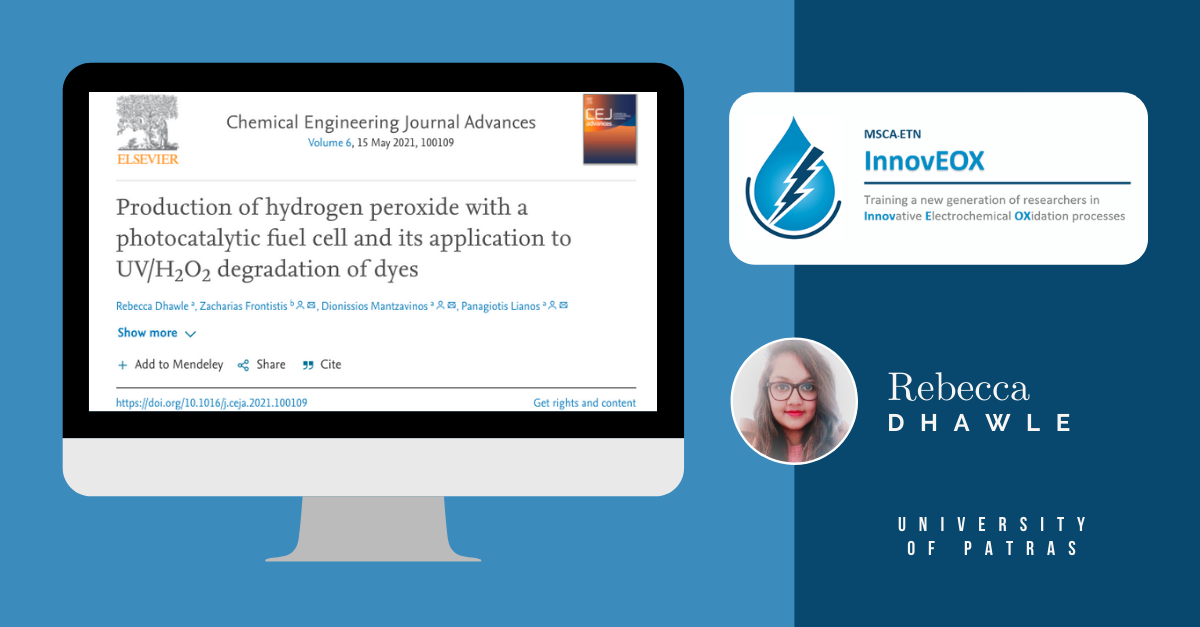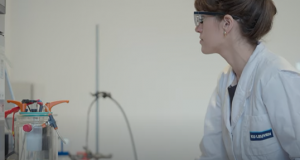
University of Patras researchers have developed a process for the production of hydrogen peroxide with a photocatalytic fuel cell and its application to UV/H2O2 degradation of dyes. This work, which was published in Chemical Engineering Journal Advances, was performed in the framework of the H2020 MSCA-ETN InnovEOX project. Main author: InnovEOX researcher Rebecca Dhawle.
This work has studied the photoelectrochemical production of hydrogen peroxide and the direct use of the produced material for the degradation (decolorization) of three common dyes: methylene blue, basic blue 41 and acid orange 7. Hydrogen peroxide was produced in the cathode compartment of a photocatalytic fuel cell by atmospheric oxygen reduction. The cell operated with a CdS-sensitized mesoporous titania photoanode and a simple carbon cloth cathode carrying a hydrophobic layer of mesoporous carbon (carbon black). The rate of hydrogen peroxide production was very high approaching 100% Faradaic efficiency. All three dyes were very stable under UV irradiation but in the presence of either commercial or photoelectrochemically produced hydrogen peroxide all three dyes were degraded. These results open a route for the conversion and storage of solar radiation in the form of chemical energy, i.e. as hydrogen peroxide, while the latter can be directly employed for environmental remediation purposes.
Full reference paper
R.Dhawle, Z.Frontistis, D.Mantzavinos, P.Lianos, Production of hydrogen peroxide with a photocatalytic fuel cell and its application to UV/H2O2 degradation of dyes, Chemical Engineering Journal Advances, 2021, DOI:10.1016/j.ceja.2021.100109
Acknowledgements
This project has received funding from the European Union’s EU Framework Programme for Research and Innovation Horizon 2020 under Grant Agreement No 861369.
 InnovEOX Innovative Electrochemical OXidation Processes for the Removal and Analysis of micro-pollutants in water streams
InnovEOX Innovative Electrochemical OXidation Processes for the Removal and Analysis of micro-pollutants in water streams



